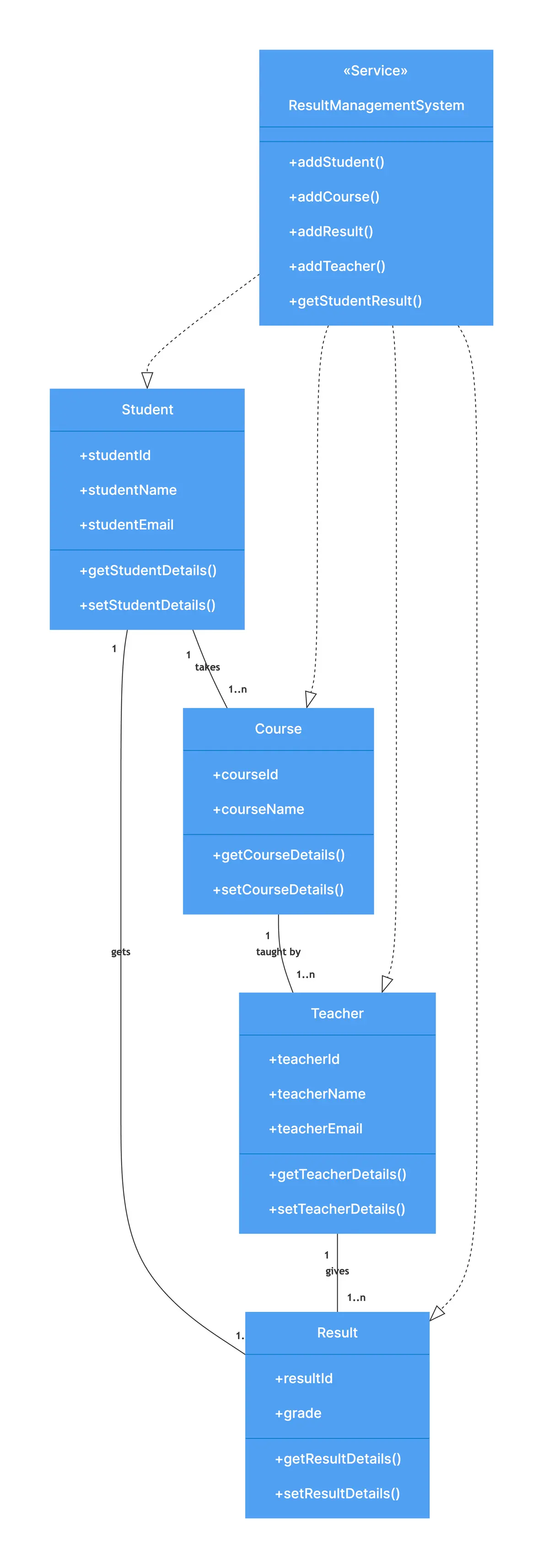This UML class diagram for a Student Result Management System illustrates how various entities like Student, Course, Teacher, and Result are connected. Students have attributes such as ID, name, and email, and can access or update their details. Courses, which are linked to teachers, hold course-related information. Results capture a student's grades and are connected to both students and teachers. The ResultManagementSystem serves as the core service, managing the addition of students, courses, results, and teachers, while also retrieving student results. Students take courses, teachers teach them, and results reflect the student's performance.

Edit this diagram in Gleek
Student result management system diagram code in Gleek
Student
+studentId
+studentName
+studentEmail
+getStudentDetails()
+setStudentDetails()
Course
+courseId
+courseName
+getCourseDetails()
+setCourseDetails()
Result
+resultId
+grade
+getResultDetails()
+setResultDetails()
Teacher
+teacherId
+teacherName
+teacherEmail
+getTeacherDetails()
+setTeacherDetails()
ResultManagementSystem:service
+addStudent()
+addCourse()
+addResult()
+addTeacher()
+getStudentResult()
Student {1}-takes-{1..n} Course
Course {1}-taught by-{1..n} Teacher
Student {1}-gets-{1..n} Result
Teacher {1}-gives-{1..n} Result
ResultManagementSystem -.-*> Student
ResultManagementSystem -.-*> Course
ResultManagementSystem -.-*> Result
ResultManagementSystem -.-*> Teacher
About class diagrams
Class diagrams are used in software engineering to describe the structure of a system. A class diagram uses Unified Modeling Language (UML) to show the classes, attributes, methods (or operations), and their relationships to each other in the system. Class diagrams prove valuable in object-oriented modeling. Class diagrams can be used to model the data structure or to design a system in detail.
Similar class diagram examples
Library management system class diagram
Course registration system class diagram
Employee leave management class diagram